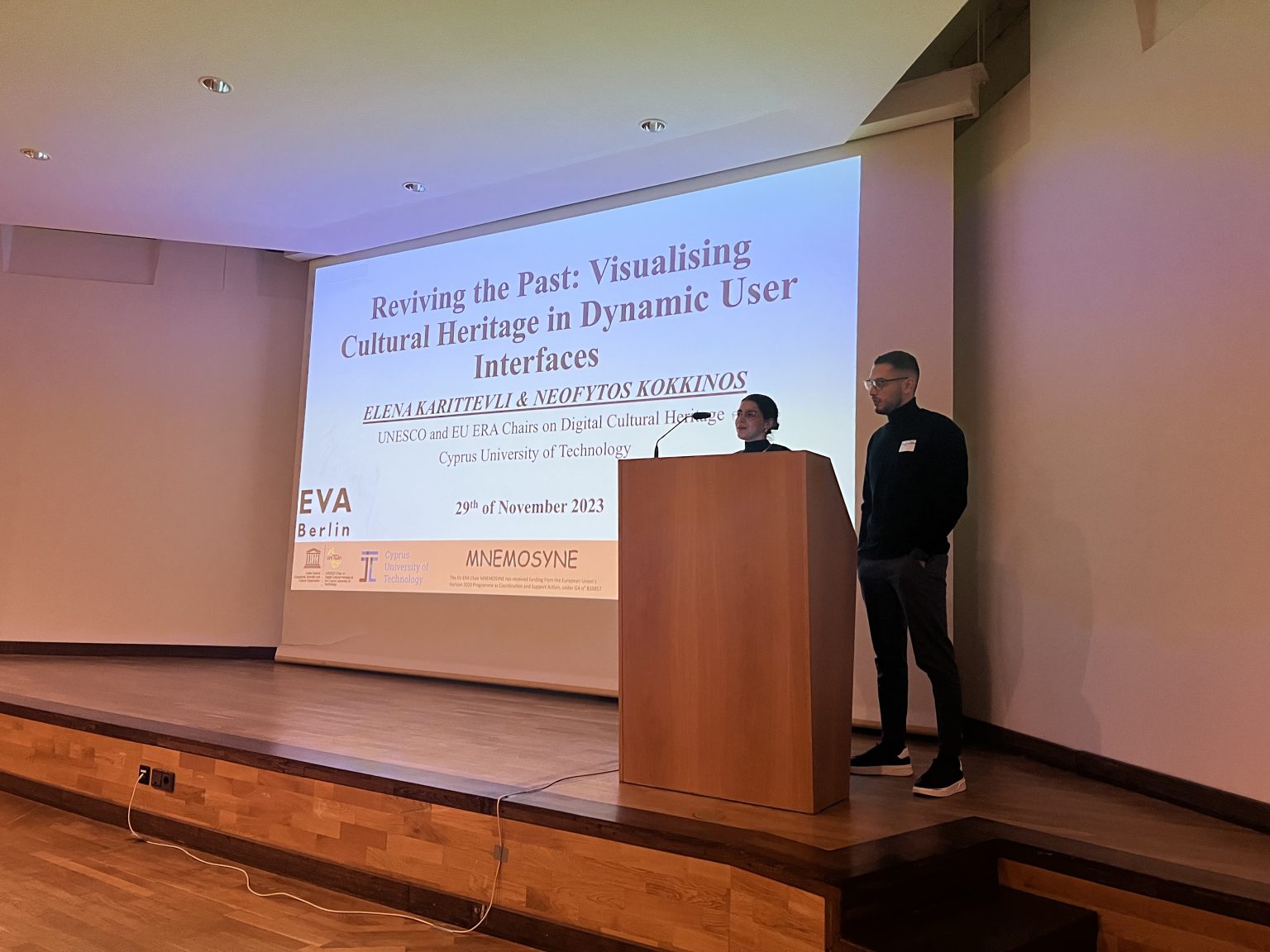The EVA-Berlin Conference 2023 became a centre for investigating disruptive technologies that are changing the creative industries, cultural sector, and artistic production landscapes. Talks about blockchain, XReality applications, artificial intelligence, and machine learning were at the centre of this revolutionary event. These technological advancements were demonstrated as the catalysts for the tangible investigation of haptic elements in artistic creations and the conversion of visual depictions into fully immersive experiences, as in the case of integrating animated weather backdrops into video game environments and landscape paintings.
The conference placed a strong focus on the role that these technologies have in enabling fundamental shifts within cultural institutions and on their educational mission. The opportunities created new ways to engage audiences and respond to the needs of the general public.
The importance of multimodal access and tailored communication services in promoting inclusivity and guaranteeing barrier-free cultural experiences, even for underprivileged or disabled audiences was emphasized. At the same time, technological instruments demonstrated their solid foundation in the domains of recording, preservation, and rebuilding; they used digital twins to restore artwork and machine learning to analyze historical documents linguistically.
The conference, however, also addressed the dangers of “The Work of Art in the Age of Mechanical Generatability.” Critical thoughts about the breaking of familial ties to factual and material aspects of artefacts were prompted by the coexistence of humans, machines, and objects. This raised questions regarding verification and credibility in conversations with algorithmic counterparts.
Mission
Elena Karittevli and Neofytos Kokkinos fellows at the Mnemosyne project on behalf of EU ERA and UNESCO Chairs on Digital Cultural Heritage, delivered a presentation at the EVA-Berlin Conference 2023 that resonated deeply with attendees. Titled “Reviving the Past: Visualizing Cultural Heritage in Dynamic User Interfaces,” their session stood out as a beacon of innovation, offering a compelling narrative on the digital preservation and presentation of cultural heritage. Their goal was to unravel the powerful collaboration between humanities and digital technologies, showcasing their transformative impact on digital cultural heritage. Their presentation showcased a transformative approach to cultural heritage, blending cutting-edge technologies with dynamic user interfaces. Elena Karittevli and Neofytos Kokkinos illustrated how game-changing technologies, including machine learning and XR applications, could breathe new life into cultural artefacts.
In essence, the presentation by Elena Karittevli and Neofytos Kokkinos contributed significantly to the overall goal of the EVA-Berlin Conference, which was to foster international collaboration, push technological boundaries, and redefine the narrative of cultural preservation in the digital age. It also demonstrated the presenters’ expertise and dedication to advancing digital cultural heritage. Their observations have had a lasting impact, serving as a stimulant for continuous cooperation and innovation in the ever-changing field of cultural heritage.
Agenda: EVA Berlin Conference 2023








